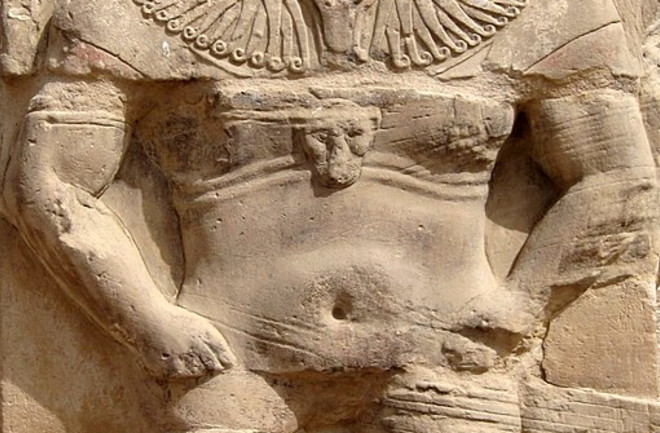The Bronze Age is known for its epic heroes, grand civilizations — the ruins of some still stand today — and of course, the increasing development of precious objects as some cultures became more socially stratified.
At the simplest level, the term “Bronze Age” is used to denote the period when cultures in Europe, Asia, and Africa began the first major use of metalworking. The Bronze Age roughly lasted from 3000 B.C.E. to 1200 B.C.E., after the Stone Age and before the Iron Age in most cultures.
Aside from advances in working with metal, the period often includes a number of other important developments in human societies such as writing systems, urbanization, and more complex state systems. Other technologies like the plow and the wheel also appeared in this time.
What kinds of things were considered luxurious by people of this age? Luxury, like beauty, is a perception of the beholder, and some cultures valued certain things more than others. Just the same, items that humans of the past cherished were often quite different from what we might consider valuable today. We’ve picked out a few strange but striking Bronze Age artifacts to highlight below.
Read More: What Ancient Teeth Tell Us About the Bronze Age Collapse
1. Octopus Vases
The Minoans, famous for the myth of the Labyrinth and the Minotaur, were one of the earliest complex Greek societies, residing on the island of Crete. A number of luxurious items have been recovered from Minoan civilization, which lasted from about 3000 B.C.E. to 1100 B.C.E.
The island had particularly adept artisans, making beautiful frescos and pottery. Of the latter, a so-called marine style developed that often depicted sea creatures. Some of the most marvelous of these included vases with intricate depictions of octopi, such as one repaired from shards discovered at the Cretan town of Palaikastro (see photo). But other surviving pottery feature fish, dolphins, seaweed, and sponges. Later Greek cultures such as the Mycenaeans borrowed from these themes.
Read More: 7 Groundbreaking Ancient Civilizations That Influence Us Today
2. Hittite Sun Disk
Hittites were a Bronze Age culture that lived mostly in what is now Turkey, from roughly 1700 B.C.E. to 1200 B.C.E. Among the more curious luxurious items of this Anatolian culture are sun disks. One of the most spectacular of these was discovered in a tomb at the ancient site of Alacahöyük.
While the purpose of these grave goods isn’t entirely clear, the bronze disks are believed to have religious significance, and likely originated among the Hattians that predated the Hittites in parts of Anatolia. Some had bird motifs while others had deer and bulls.
Read More: This Bronze Age Power Took Notes on Ancient Rituals
3. Harappan Terra Cotta Figurines
Harappa, a settlement of the Harappan or Indus Valley people, was one of the earliest civilizations in India. Among the artifacts discovered in this ancient city and the area of its surrounding influence are a large number of terra-cotta figurines.
These were made to resemble everything from animals to human figures, most of them female. While the terra-cotta objects range in complexity, some are intricately crafted and painted. Some of the females are covered with jewelry and they may represent deities.
Read More: Why We Still Can't Read the Writing of the Ancient Indus Civilization
4. Ritual Bronze Wine Vessels
The Bronze Age in China began as early as 2000 B.C.E., lasting to around the 3rd century B.C.E. As in other cultures, some of the classic luxury items from this period are likewise made of bronze itself and include wine vessels that were often used in context involving the dead.
Some of these were made specifically to be entombed with the affluent, while others were used in rituals at ancestral altars, according to the Sidney and Lois Eskenazi Museum of Art. In the Shang and Zhou dynasties, these ritual vessels also sometimes included inscriptions and dedications.
Read More: The 6 Most Iconic Artifacts From The Ancient World
5. The Dancing Pygmy of Pepi II
The Bronze Age of Egypt (about 3100 B.C.E. to 1100 B.C.E.) covers three periods and two intermediate periods, from the Old Kingdom to the end of the New Kingdom — a glorious span of time for the ancient civilization, when monuments like the pyramids at Giza and the Sphinx were built. Expensive items like papyrus — an early type of paper that came from the plant of the same name — are fairly well known. But one of the stranger “luxuries” of this period wasn’t an object, unfortunately, but an actual person — in this case, a dancing dwarf.
Around the 23rd century B.C.E., the Egyptian King Pepi II — then eight years old — got word that Harkhuf, a well-known general and explorer of the time, had obtained a pygmy during an expedition in Africa. The Egyptian pantheon of gods included several dwarf deities. Living dwarfs and pygmies were rare and highly coveted, believed to have special powers of their own, and the young king badly wanted one.
According to a letter written from Pepi II, the king exhorted the expedition leader to keep the dancing pygmy safe, promising to bestow fabulous gifts and honors on Harkhuf if he could bring the dwarf back to Egypt, where he could presumably dance for the king and honor the gods through his performing art.
Not surprisingly, history doesn’t record how the dwarf felt about being taken so far from home and treated as the possession of a boy ruler. But we can be grateful that today, the trade of living people as luxury items is a Bronze Age practice that has long since fallen out of favor.
Read More: 3 of the Most Important Pharaohs of Ancient Egypt

